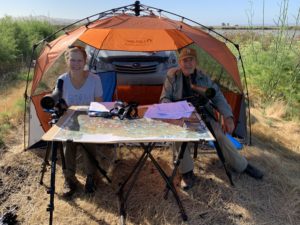
Photo of Linda Sheppard & Len Nelson
By Mary Kadri
Among the several pleasures of volunteering with Petaluma Wetland Alliance, and then volunteering to help lead researcher Len Nelson, is that I had a chance to get exclusive access to the gated community of the showy stars of the wetland skies and ponds: the beautiful great blue herons and egrets. This experience is quite different from the monitoring of swallow and bluebird nests, where my education began, and which I chronicled earlier.
Len and his usual partner, Linda Sheppard, choose a spot some 75 yards from the eucalyptus tree grove where they set up a watch camp, complete with awning, table, chairs, site map, and most importantly, excellent viewing telescopes. On this particular Saturday, I was filling in for Linda (to the best of my limited ability.)
The most surprising and awe-inspiring aspect of viewing is the number of nests and enormous birds in close proximity. In addition to the egrets and herons that Len and Linda monitor are dozens of double crested cormorants mixed right in. Abundant food from the nearby oxidation ponds and fields provides enough crustaceans, lizards, gophers, and such, for a diverse population of adults and babies of many colors.
It truly does remind one of a highrise apartment complex, packed with life: nesting chicks, perching birds, birds walking along branches, taking off, and landing!
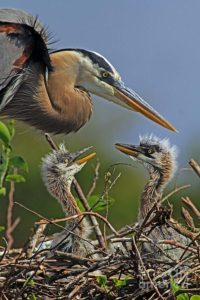
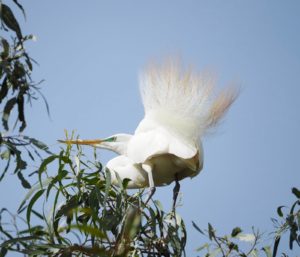
Photo (L) by PWA Member (Unkown) and (R) by Jan Cassavant
The system used by Audubon, and more specifically, our local partner, Audubon Canyon Ranch, for recording stages of the chicks is thus: Record a “1” if parent is continuously nesting on apparent eggs, “2” if chicks have hatched and fuzzy balls are visible, “3” if chicks can now stand up but parent does not yet leave them alone at all, “4” if chicks stand and now parents feel confident enough to leave them while getting food, and lastly, “5” if we can see chicks standing, exercising wings, walking on nearby branches away from the nest, getting ready to fly.
This is what we recorded on the May weekend when I observed with Len:
15 Great Egret nests, with total of 6 chicks observed, 8 nests are Stage 1 (eggs), 1 in Stage 2 (fuzzy chicks), 3 in Stage 3 (chicks now have feathers and stand), and for 4 nests, we did not observe any birds present.
13 Great Blue Heron nests, total of 15 chicks, 7 in Stage 3, 4 in Stage 1, and 1 in Stage 4.
Although PWA doesn’t monitor the cormorants, I counted at least 15 nests, with many of the young walking around on the branches.
For all of these species, it takes close to a month for the eggs to hatch and about 7-8 weeks for them to fledge and become independent.
Len Nelson and Linda Sheppard have been working together to monitor this site’s herons and egrets for five years. This year they went every weekend, from the first week of March until its conclusion on June 19, 2022. Len has been doing this work for 13 years, since 2010!
The 2022 Season Count
At the study’s conclusion on June 19, 2022, Len and Linda found the most ever great blue heron chicks expected to fledge – 24. The great egret chicks expected to fledge was the second highest number since they began monitoring: 51. (In 2010 there were 61.) Although the cormorants are not part of their official study, they also counted 30 double crested cormorant nests, and based on their observations, they conclude that it is safe to say that each nest produced two or more chicks.
Happy birding, everyone; grab your binoculars, friends, and kids and come see these magnificent birds at Ellis Creek!


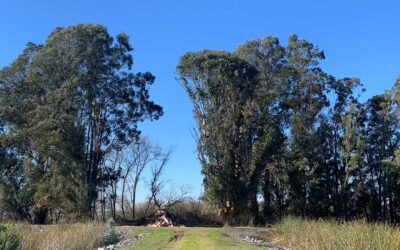
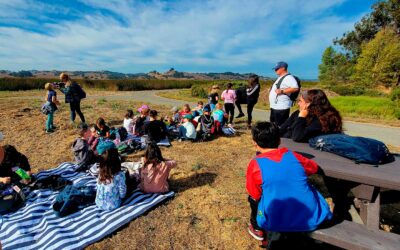
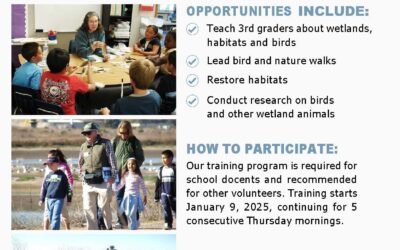
0 Comments